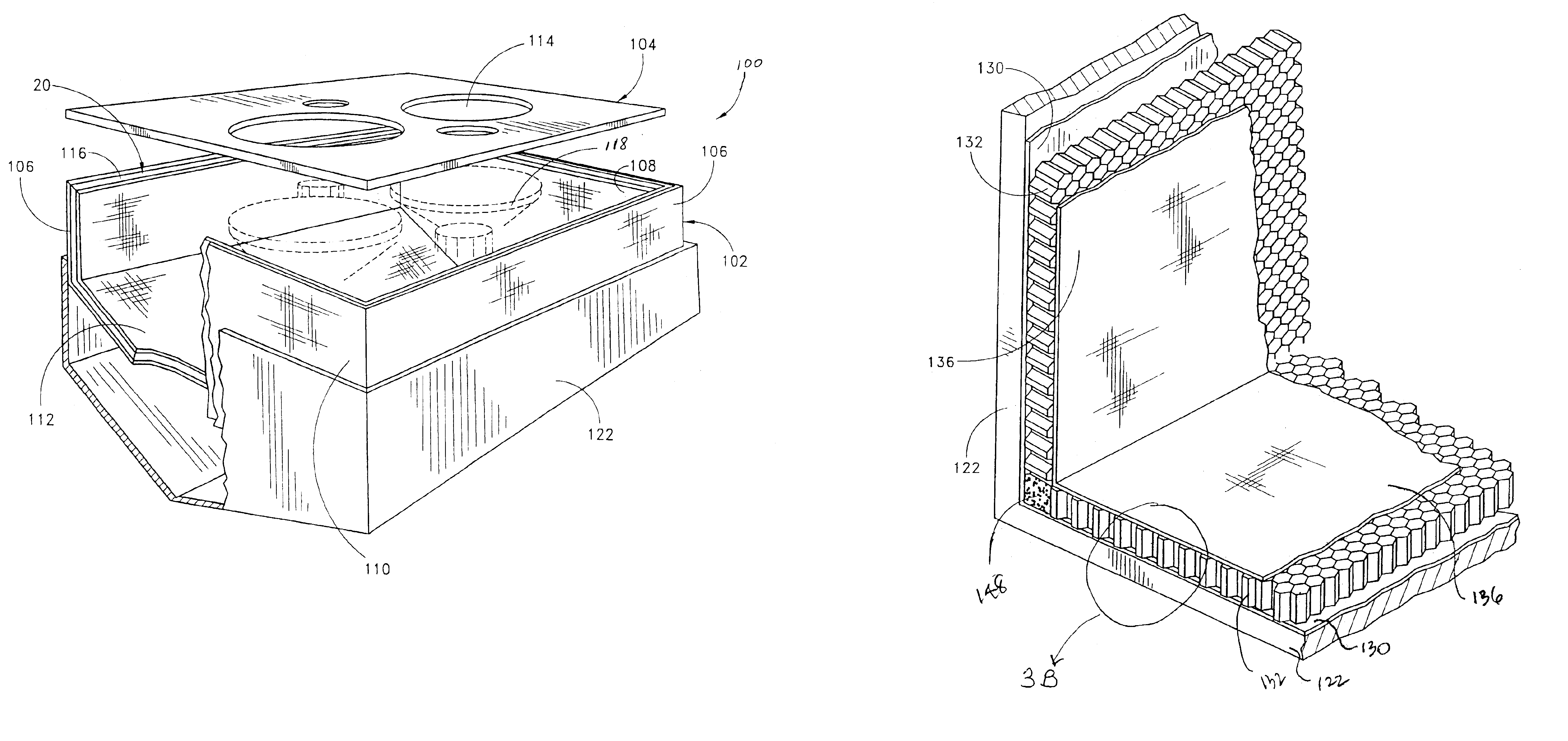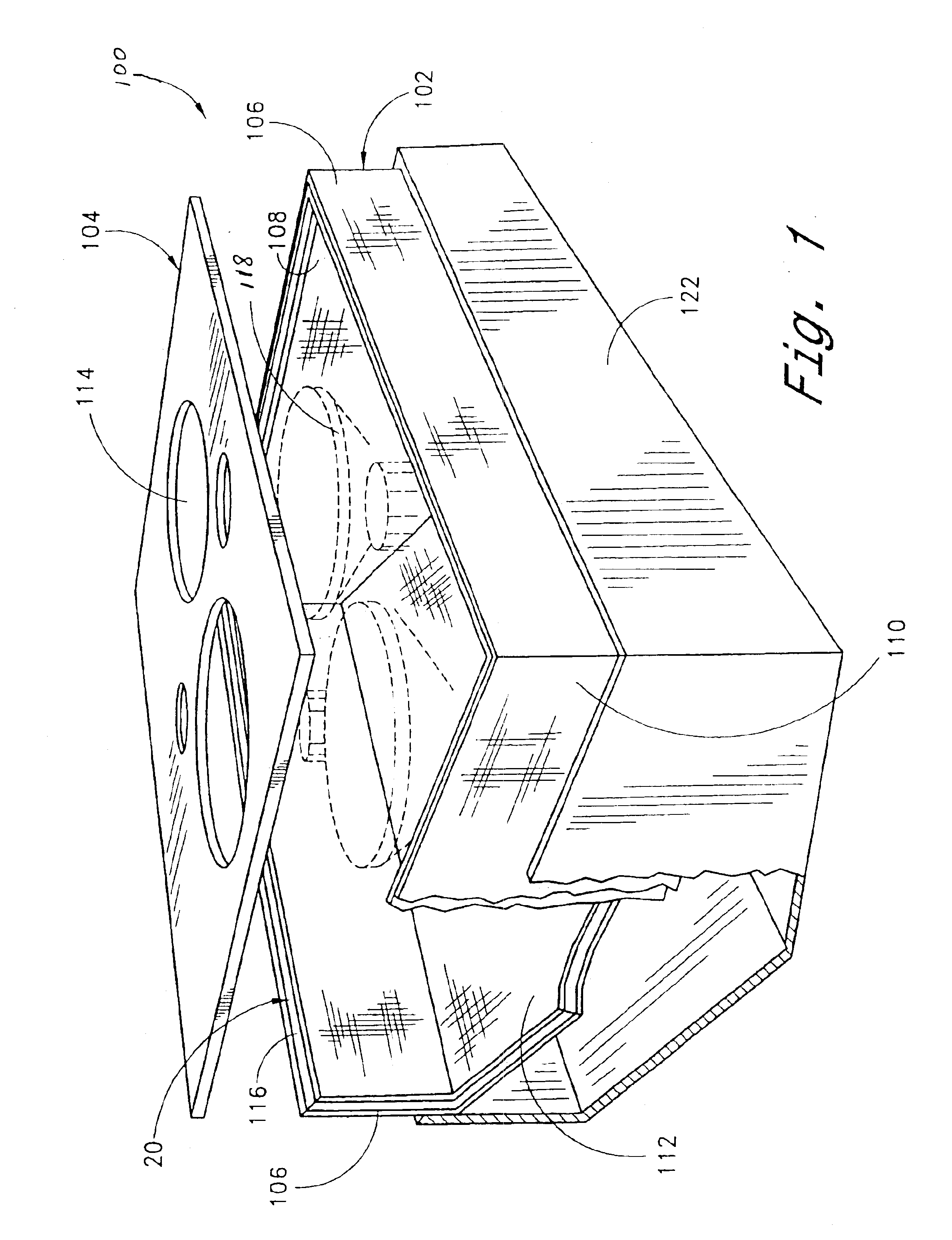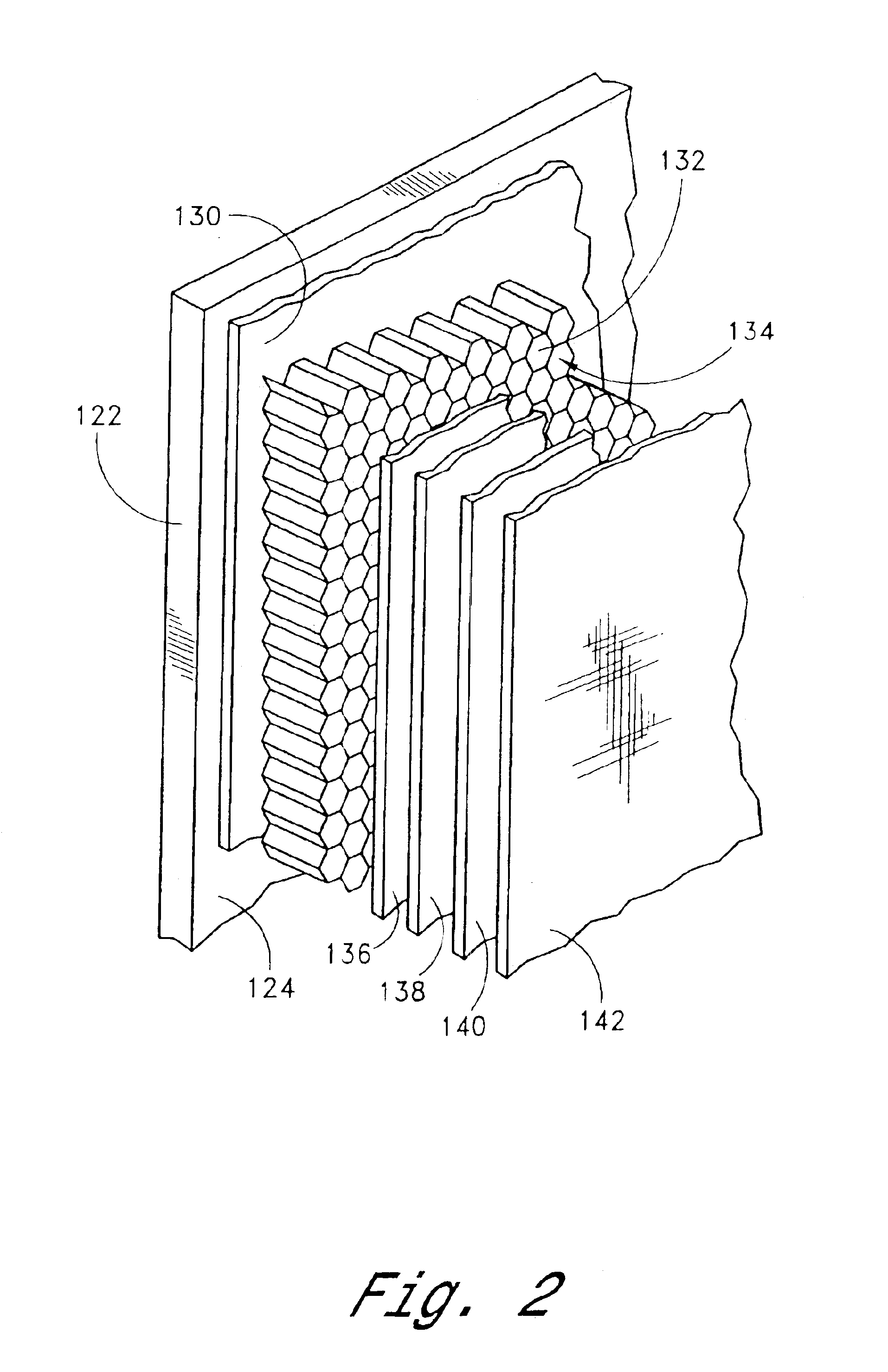Lightweight speaker enclosure
a speaker enclosure and light weight technology, applied in the field of speaker enclosures, can solve the problems of reducing affecting the sound performance of the speaker,
- Summary
- Abstract
- Description
- Claims
- Application Information
AI Technical Summary
Benefits of technology
Problems solved by technology
Method used
Image
Examples
Embodiment Construction
[0022]Reference will now be made to the drawings wherein like numerals refer to like parts throughout. FIG. 1 illustrates a speaker enclosure 100 according to one embodiment of the construction techniques described herein. The speaker enclosure 100 is comprised of two basic component parts, a box section 102 and a baffle section 104. The box section 102 defines a volume of space in which one or more speakers 118 (shown in phantom) are positioned. In an embodiment of the speaker enclosure 100 shown in FIG. 1, the box section 102 is shown to have a generally rectangular shape comprising opposing sidewalls 106, a top wall 108, a bottom wall 110, and a back wall 112. In one embodiment, the back wall 112 of the enclosure comprises two planar walls that extend from a back edge of each side wall, and form an obtuse angle at their intersection. The top and bottom walls 108, 110 are generally pentagonally shaped to achieve an open box configuration wherein the top, bottom, opposing side, and...
PUM
| Property | Measurement | Unit |
|---|---|---|
| Temperature | aaaaa | aaaaa |
| Pressure | aaaaa | aaaaa |
| Capacitance | aaaaa | aaaaa |
Abstract
Description
Claims
Application Information
 Login to View More
Login to View More - R&D
- Intellectual Property
- Life Sciences
- Materials
- Tech Scout
- Unparalleled Data Quality
- Higher Quality Content
- 60% Fewer Hallucinations
Browse by: Latest US Patents, China's latest patents, Technical Efficacy Thesaurus, Application Domain, Technology Topic, Popular Technical Reports.
© 2025 PatSnap. All rights reserved.Legal|Privacy policy|Modern Slavery Act Transparency Statement|Sitemap|About US| Contact US: help@patsnap.com



